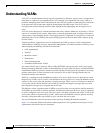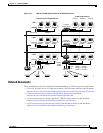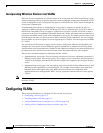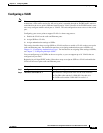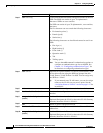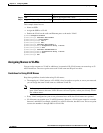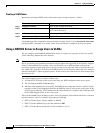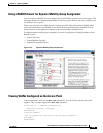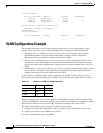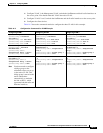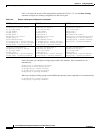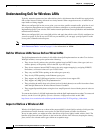
14-7
Cisco IOS Software Configuration Guide for Cisco Aironet Access Points
OL-29225-01
Chapter 14 Configuring VLANs
Configuring VLANs
This example shows how to:
• Name an SSID
• Assign the SSID to a VLAN
• Enable the VLAN on the radio and Ethernet ports as the native VLAN
ap1200# configure terminal
ap1200(config)# interface dot11radio0
ap1200(config-if)# ssid batman
ap1200(config-ssid)# vlan 1
ap1200(config-ssid)# exit
ap1200(config)# interface dot11radio0.1
ap1200(config-subif)# encapsulation dot1q 1 native
ap1200(config-subif)# exit
ap1200(config)# interface fastEthernet0.1
ap1200(config-subif)# encapsulation dot1q 1 native
ap1200(config-subif)# exit
ap1200(config)# end
Assigning Names to VLANs
You can assign a name to a VLAN in addition to its numerical ID. VLAN names can contain up to 32
ASCII characters. The access point stores each VLAN name and ID pair in a table.
Guidelines for Using VLAN Names
Keep these guidelines in mind when using VLAN names:
• The mapping of a VLAN name to a VLAN ID is local to each access point, so across your network,
you can assign the same VLAN name to a different VLAN ID.
Note If clients on your wireless LAN require seamless roaming, We recommend that you assign the
same VLAN name to the same VLAN ID across all access points, or that you use only VLAN
IDs without names.
• Every VLAN configured on your access point must have an ID, but VLAN names are optional.
• VLAN names can contain up to 32 ASCII characters. However, a VLAN name cannot be a number
between 1 and 4095. For example, vlan4095 is a valid VLAN name, but 4095 is not. The access point
reserves the numbers 1 through 4095 for VLAN IDs.
Step 11
end Return to privileged EXEC mode.
Step 12
copy running-config startup-config (Optional) Save your entries in the configuration file.
Command Purpose






